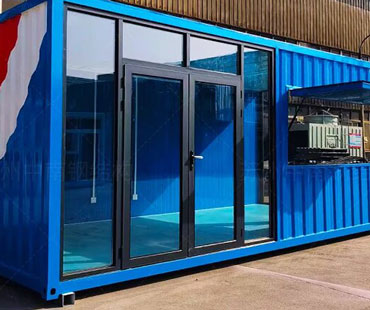In an increasingly interconnected global economy, the safe transportation and storage of goods have become paramount. Containers play a crucial role in this process, acting as the backbone of international trade. With millions of containers being transported by sea, land, and air every year, ensuring their safety is essential not only for the protection of the goods inside but also for the efficiency and reliability of the supply chain. This article explores the various aspects of container safety, highlighting key practices and technologies that help safeguard cargo during transportation and storage.
Container safety encompasses a range of practices and measures designed to protect cargo from damage, theft, and environmental hazards. This includes the physical integrity of the container itself, the handling procedures employed during loading and unloading, and the security measures implemented throughout the logistics process. Understanding the potential risks and challenges involved in container transportation is the first step toward ensuring safety.
1. The Importance of Container Integrity
The structural integrity of a shipping container is vital for the safety of the goods it carries. Containers are designed to withstand harsh environmental conditions, including extreme temperatures, humidity, and physical stress during transit. Regular inspections are essential to identify any signs of wear and tear, such as rust, dents, or compromised seals.
Preventative Measures:
- Routine Inspections: Conduct thorough inspections before and after each journey to assess the condition of the container.
- Maintenance Protocols: Establish a maintenance schedule to address any issues promptly, ensuring that containers remain in optimal condition.
2. Proper Loading and Securing of Cargo
How cargo is loaded into a container significantly affects its safety during transportation. Improper loading can lead to shifting, which may cause damage to the goods or even result in accidents during transit.
Best Practices for Loading:
- Weight Distribution: Ensure even weight distribution within the container to prevent instability. Heavy items should be placed at the bottom and towards the center.
- Securing Cargo: Use appropriate securing devices, such as straps, dunnage, and blocking, to keep the cargo in place during transit. This minimizes movement and reduces the risk of damage.
3. Temperature and Environmental Control
Certain goods, such as perishables and pharmaceuticals, require specific temperature and environmental conditions to remain safe and effective. Using refrigerated containers (reefers) and monitoring the internal conditions is crucial for maintaining the quality of sensitive cargo.
Temperature Control Measures:
- Reefer Containers: Utilize refrigerated containers for temperature-sensitive goods to ensure they remain within the required temperature range throughout the transportation process.
- Monitoring Systems: Implement real-time monitoring systems that track temperature and humidity levels within the container, allowing for immediate action if conditions deviate from the set parameters.

4. Security Measures Against Theft and Tampering
The risk of theft and tampering is a significant concern in container transportation. With high-value goods being transported, it is crucial to implement robust security measures to protect cargo from potential threats.
Security Best Practices:
- Seals and Locking Mechanisms: Use high-security seals and locking mechanisms on containers to deter unauthorized access. Regularly check seals to ensure they have not been tampered with.
- GPS Tracking: Equip containers with GPS tracking devices to monitor their location in real time. This can help in recovering stolen containers and provide peace of mind to shippers and customers.
5. Training and Awareness for Personnel
The human element plays a critical role in ensuring container safety. Proper training and awareness among all personnel involved in the logistics process can prevent accidents and enhance overall safety.
Training Initiatives:
- Loading and Unloading Procedures: Provide comprehensive training on the correct procedures for loading and unloading containers to minimize risks associated with manual handling.
- Safety Protocols: Educate staff on safety protocols related to container inspections, securing cargo, and responding to emergencies.
6. Compliance with Regulations and Standards
Adhering to international regulations and industry standards is essential for maintaining container safety. Organizations such as the International Maritime Organization (IMO) and the International Organization for Standardization (ISO) provide guidelines that help ensure safe practices in container transportation.
Regulatory Compliance:
- Container Standards: Ensure that containers meet the ISO standards for safety and structural integrity. This includes compliance with the CSC (Container Safety Convention), which mandates regular inspections and certifications.
- Safety Data Sheets (SDS): For hazardous materials, ensure that Safety Data Sheets are available and that staff are trained in handling and transporting dangerous goods in accordance with relevant regulations.
Container safety is a multifaceted issue that requires a comprehensive approach involving technology, best practices, and personnel training. By focusing on the integrity of containers, proper loading techniques, environmental controls, security measures, personnel training, and regulatory compliance, businesses can significantly reduce the risks associated with cargo transportation and storage.


